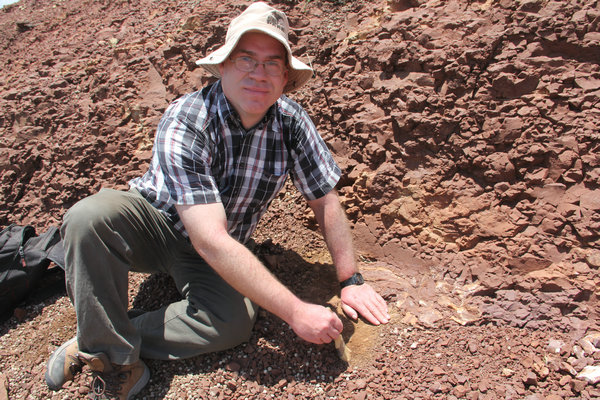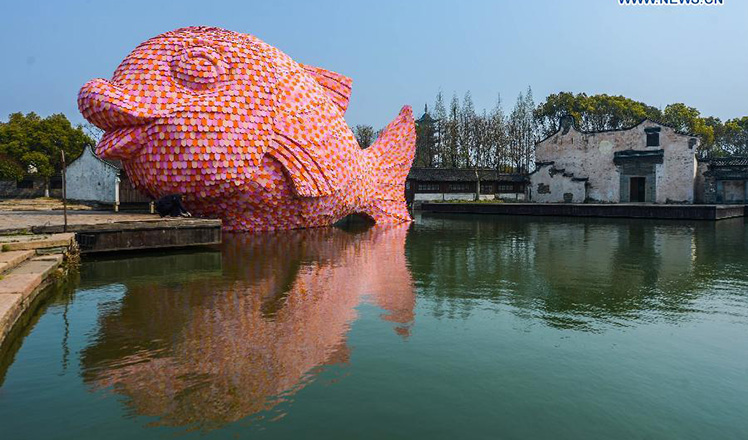From Fish to Man
Updated: 2016-03-30 08:55
By Yang Yang(China Daily)
|
|||||||||
 |
|
Paleontologists Corwin Sullivan, one of the authors of From Fish to Human: The March of Vertebrate Life in China.[Photo provided to China Daily] |
Wang asks: "We want to know what's going on. How did we evolve from the primitive fish to the present stage? Are we the end of the world?"
The book project lasted two and a half years.
The authors selected 15 representative biotas and fauna based on fossils discovered around China to show the nine key transitional events through the fish-to-human evolutionary process, talking about not only the stories of the fossils but also internationally well-known paleontologists who discovered them.
The 15 biotas include the Chengjiang Biota, from which the oldest known fish on Earth is said to have appeared,which is linked to the first key transition-the emergence of the backbone. Then, there is the Jehol Biota, from which the first feathered dinosaur fossil was discovered, that's linked to the eighth key transition-the evolution of feathers. Then the book moves on to the Zhoukoudian Site,where the remains of the Peking man were discovered,marking the origin of early humans.
"We wrote about fauna that represent different geological ages. We selected the most-representative fauna to represent each age... to show what was happening in vertebrates' evolution at those specific times,"Wang says.
Because of people's love of dinosaur stories, they've devoted five of 15 chapters in the book to the extinct animals.
Many difficult decisions had to be made while picking fauna and fossils for the book.
"We couldn't have covered everything. There are a lot more Chinese fossil records than there are in the book. It's a good look at Chinese fossil records-not absolutely comprehensive, but it does give a good sampling of what China has," Sullivan says.
- US officials applaud China for nuclear cooperation
- Beyonce, Easter Bunny highlight Obama's final egg roll
- Egypt Air flight hijacked and lands in Cyprus
- Brazil party set to abandon Rousseff
- Man shot and wounded by police at US Capitol complex
- One terror suspect arrested in Rotterdam at France's request

 Czech President Milos Zeman hosts Xi at private residence
Czech President Milos Zeman hosts Xi at private residence
 The snow-white world of a tombstone carver
The snow-white world of a tombstone carver
 Conjoined twins' operation bittersweet for family
Conjoined twins' operation bittersweet for family
 Airplane- enthusiast farmer builds 'military helicopter'
Airplane- enthusiast farmer builds 'military helicopter'
 69 killed, 300 injured as suicide blast hits Pakistan on Easter
69 killed, 300 injured as suicide blast hits Pakistan on Easter
 Shanghai Disneyland fans endure long wait, high ticket prices
Shanghai Disneyland fans endure long wait, high ticket prices
 Giant pink 'Floating Fish' displayed in E China
Giant pink 'Floating Fish' displayed in E China
 First lady Peng Liyuan leads fight against tuberculosis
First lady Peng Liyuan leads fight against tuberculosis
Most Viewed
Editor's Picks

|

|

|

|

|

|
Today's Top News
Marriott unlikely to top Anbang offer for Starwood: Observers
Chinese biopharma debuts on Nasdaq
What ends Jeb Bush's White House hopes
Investigation for Nicolas's campaign
Will US-ASEAN meeting be good for region?
Accentuate the positive in Sino-US relations
Dangerous games on peninsula will have no winner
National Art Museum showing 400 puppets in new exhibition
US Weekly

|

|








